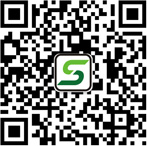Digital Mobile Radio (DMR) has revolutionized two-way communication by introducing efficiency and versatility through advanced technology. At the heart of DMR lies a concept called *time slots*, which enables a single frequency to handle multiple conversations simultaneously. Whether you're new to DMR or seeking to deepen your understanding, this guide will explain time slots in simple terms, explore their significance, and highlight real-world applications.
What Are DMR Time Slots?
DMR time slots are a feature of Time Division Multiple Access (TDMA), the technology underpinning DMR systems. TDMA divides a radio frequency into alternating "time slots," allowing two separate voice or data transmissions to occur on the same frequency without interference. Think of it as a highway with two lanes: while one vehicle (conversation) travels in the first lane, another uses the second lane at the same time.
In DMR, each frequency is split into two time slots:
- Time Slot 1 (TS1)
- Time Slot 2 (TS2)
These slots alternate rapidly—so fast that users perceive their conversations as seamless. This doubling of capacity is one of the key advantages of DMR over analog systems.
How Do Time Slots Work?
TDMA operates by splitting each second into 30-millisecond intervals. During each interval, one time slot is active while the other rests, creating a cycle that repeats continuously. Here’s a simplified breakdown:
1. Transmission Cycle: A DMR radio transmits in bursts, using either TS1 or TS2.
2. Synchronization: All devices on the network sync to a common timing source to avoid overlap.
3. Efficiency: By utilizing both slots, a single frequency supports two channels, effectively doubling capacity.
For example, in a DMR repeater setup, the repeater receives transmissions on one time slot and retransmits them on the other, ensuring clear and organized communication.
Benefits of DMR Time Slots
1. Enhanced Capacity:
With two slots per frequency, DMR accommodates twice as many users as analog systems, making it ideal for crowded networks or organizations with high communication demands.
2. Power Efficiency:
Since radios transmit in short bursts, battery life is extended compared to continuous transmission in analog modes.
3. Simultaneous Voice and Data:
One time slot can carry voice while the other transmits data, such as GPS locations or text messages, enabling multitasking without interruption.
4. Cost-Effectiveness:
By maximizing existing frequency resources, DMR reduces the need for additional infrastructure, lowering operational costs.
Practical Applications of Time Slots
DMR time slots are widely used across industries:
- Public Safety: Emergency services use separate time slots for dispatch and tactical communications, ensuring critical messages are prioritized.
- Event Management: Large events assign different teams (e.g., security and medical staff) to distinct time slots for coordinated operations.
- Business and Logistics: Companies optimize fleet communications by dedicating one slot for driver updates and another for administrative tasks.
Tips for Optimizing Time Slot Usage
- Plan Your Channel Layout: Assign time slots based on priority. For instance, use TS1 for urgent communications and TS2 for routine updates.
- Leverage Privacy Features: Utilize built-in encryption or talk groups to keep conversations secure and organized.
- Test Signal Strength: Ensure your equipment syncs properly with repeaters to avoid timing issues that could disrupt communication.
Common Misconceptions About Time Slots
1. “Time Slots Reduce Audio Quality”:
On the contrary, DMR’s digital design ensures consistent clarity, and time slots help minimize congestion, which can improve reliability.
2. “Slots Are Too Complex for Beginners”:
While the technology is advanced, modern DMR radios often automate slot assignments, making them user-friendly.
DMR time slots are the backbone of efficient digital radio communication. By understanding how they function and applying best practices, users can unlock the full potential of their DMR systems—whether for professional, recreational, or emergency use. As technology evolves, time slots will continue to enable smarter, more adaptable communication solutions for a connected world.



